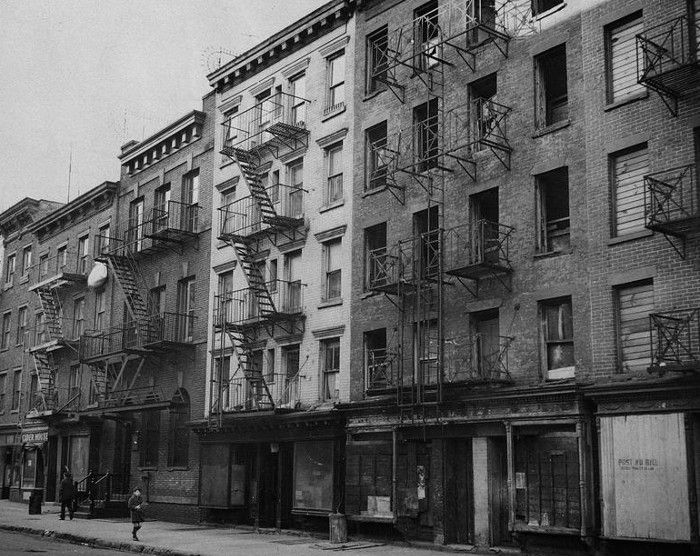Tenements & Urbanization in the Gilded Age

The wave of immigration that the United States experienced after the end of the Civil War brought with it issues regarding housing. Due to the sheer amount of individuals who were coming into the country, cities found themselves scrambling to house the multitudes of families.
The jobs to be had at this time were in factories, most of which were in urban areas. The housing solution came in the form of tenement buildings, which were cheap, high-rise apartment buildings that could house many families virtually one on top of the other.

Construction of the tenement buildings was typically quick, and usually poorly done. The buildings themselves were usually five to seven stories high and divided into multiple living spaces. Families who lived in the tenements were crammed into 300-400 square foot apartments that featured a single bedroom, kitchen, and a front room for everyone to share.
On top of the tenement spaces being poorly built, they were also not well lit or ventilated. Fresh air could not circulate in the rooms and there was often no plumbing. Because of the overcrowding of these buildings, as well as the poor quality of materials used to construct them, diseases ran rampant as well as disasters such as building fires. The sickness and destruction would later lead people to speak out against the shabby construction methods of these cities.
Tenement buildings were first built in America's larger cities, such as Chicago and New York City. In fact, by 1900, about two-thirds of New York City’s population lived in tenements.
The people inhabiting these buildings were certainly not the rich and the powerful; rather, the families who were crammed into the tenement houses and apartments were mostly European immigrants and poor laborers who could not afford to move to a better area of the city in which they were living.
New York was one of the first cities to introduce legislation that would improve living conditions for immigrants and poor families. In 1898, the Tenement House Committee was created to research and educate the public on the dangers that were present in the way tenement houses were built.
Thanks to their efforts, the Tenement House Act of 1901 was passed, which required that all buildings feature an out-facing window to ensure proper ventilation, indoor plumbing to protect against sickness and diseases, and plans to protect tenement dwellers in the event of a fire.
